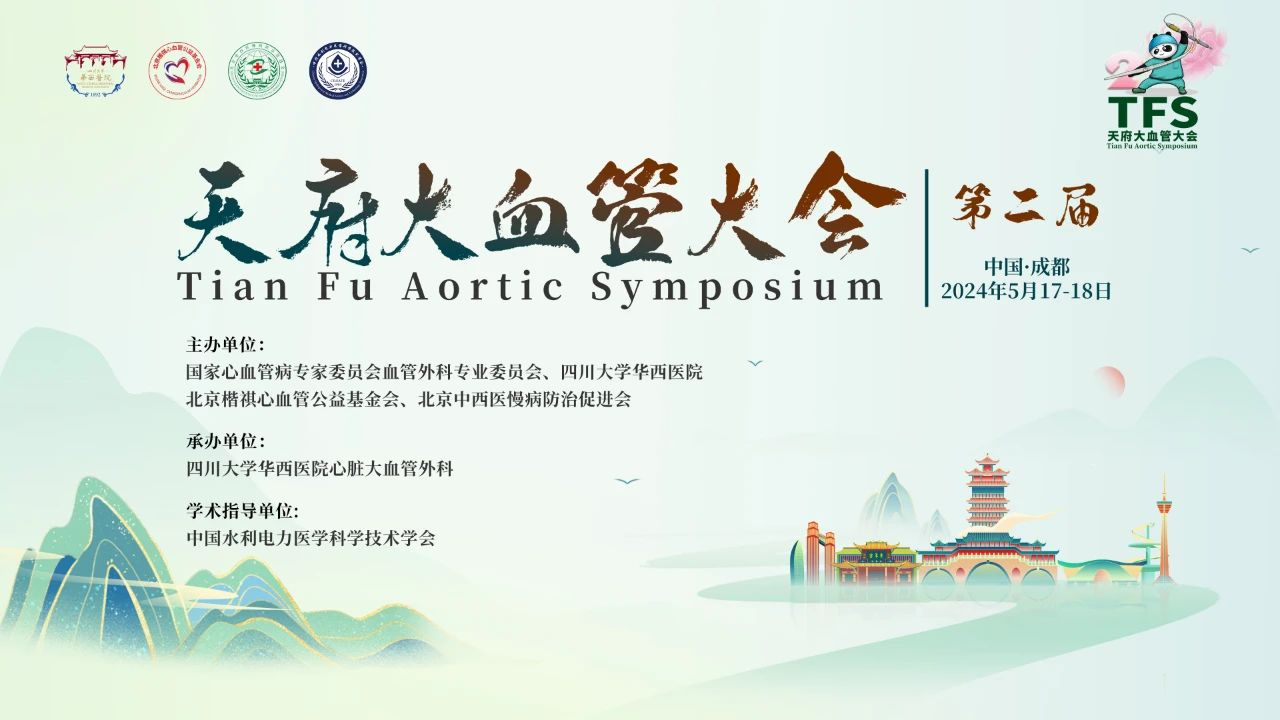
The 2nd Tianfu Vascular Conference (TFS 2024) was successfully held on May 17-18, 2024, in Chengdu. From the pinnacle of medical science, we foresee the future of the vascular discipline, recognizing the immense responsibility and honorable mission ahead. As members of the vascular field, we are tasked with advancing the discipline and improving diagnostic and treatment standards. In the future, we will analyze the content of TFS lectures to help you understand the most cutting-edge vascular treatment experiences.
At this conference, Professors Hu Yijie and Wu Wenjun from the Department of Cardiovascular Surgery at the Army Specialty Medical Center (Daping Hospital) delved into the diagnosis and treatment strategies for traumatic aortic injury, emphasizing the importance of early accurate diagnosis and multidisciplinary cooperation. They highlighted that this condition is the second leading cause of death in traffic accidents and, although rare, has a very high mortality rate, with over 75% of pre-hospital deaths associated with it.
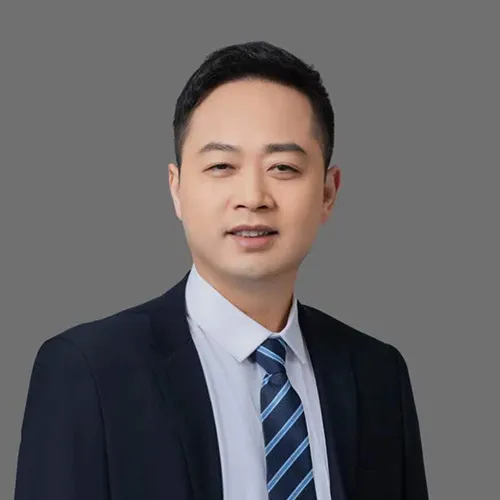
1. Research Background and Data
Trauma is the leading cause of death among young people, with traffic accidents accounting for 81% of these cases. While aortic injuries constitute less than 1% of traffic accident injuries, their mortality rate is extremely high, particularly with chest and thoracic injuries. Data shows that blunt traumatic aortic injury is the second leading cause of death following traffic accidents.
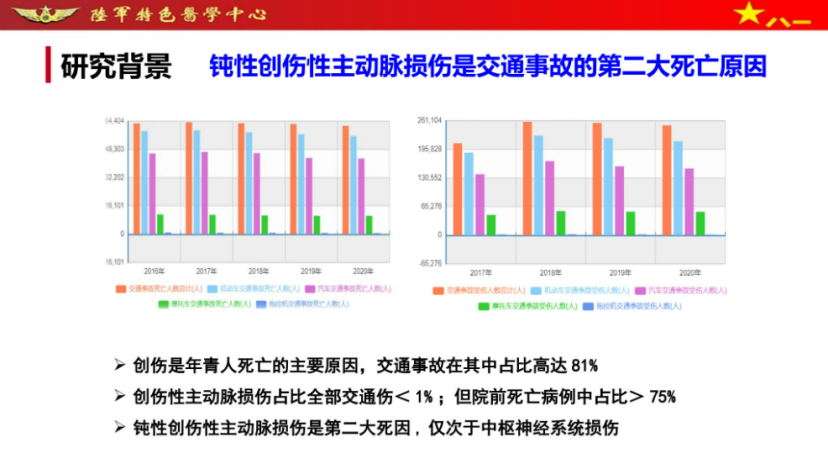
2. Clinical Applications and Case Analysis
For traumatic aortic injuries, the Army Specialty Medical Center employs a range of personalized treatment strategies, including endovascular exclusion, artificial vessel replacement, and hybrid surgery. These methods are chosen based on the urgency of the condition and the specific circumstances of the patient. For example, a 59-year-old male patient who sustained injuries from a heavy object was treated with the Sun’s procedure, and postoperative follow-up indicated good outcomes.
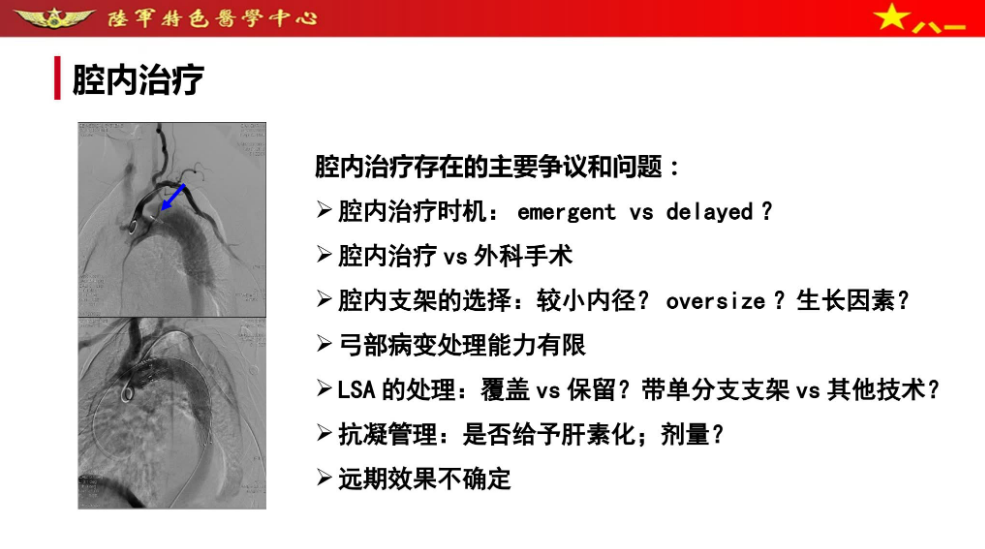
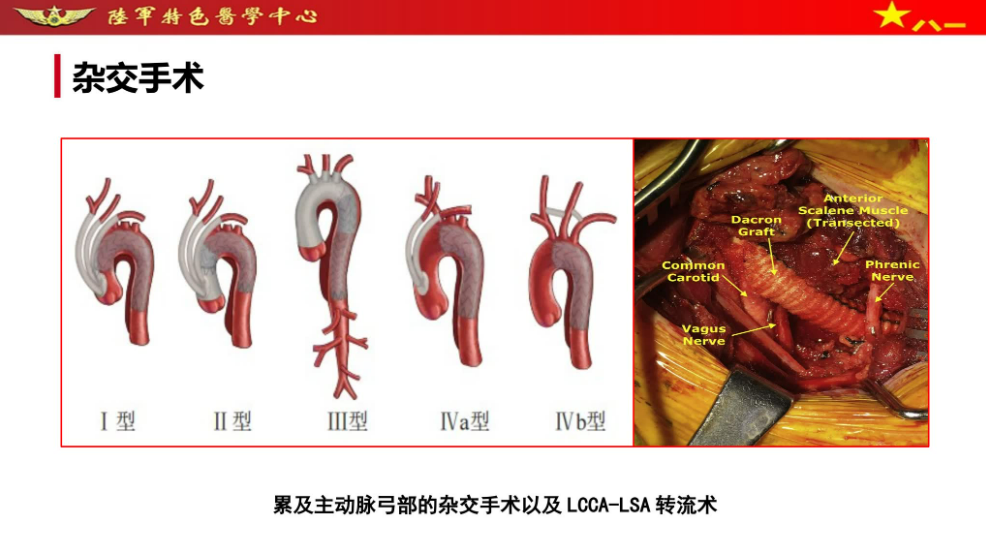
3. Technical Introduction and Treatment Outcomes
In managing aortic injuries, Professor Hu emphasized the importance of hybrid surgery, which combines traditional open surgery with the latest endovascular stent technology, effectively addressing complex aortic injuries. For instance, a complicated case involving the aortic arch was successfully repaired using hybrid surgery.
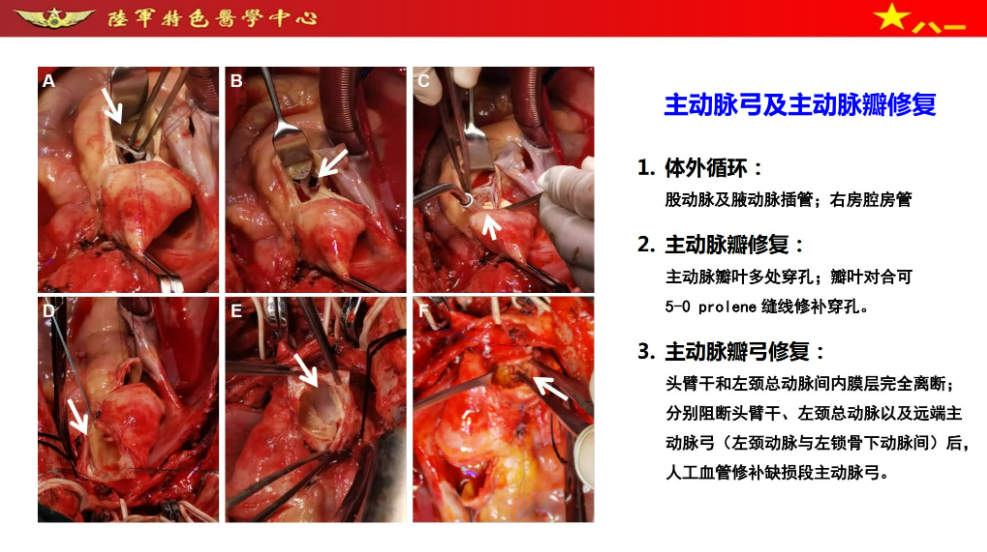
4. Summary
• Hemodynamically Unstable Patients: First, actively control life-threatening trauma.
• Hemodynamically Stable Patients with Grade II or Lower Injuries: Conservative treatment and regular follow-up with aortic CTA.
• Hemodynamically Stable Patients with Grade II or Higher Injuries:
• If the injury is located in the descending thoracic aorta with sufficient proximal anchorage, TEVAR is recommended.
• If the injury involves the origin of the left subclavian artery or the covered stent will occlude the origin of the left subclavian artery, hybrid surgery (TEVAR with left subclavian artery bypass, chimney procedure, or interventional fenestration) is advised.
• If the injury involves the ascending aorta, aortic arch, or multiple branch arteries, and/or is combined with anatomical abnormalities of the aortic arch, standard open surgery is necessary.
• For patients who cannot undergo extracorporeal circulation, hybrid surgery is often considered.
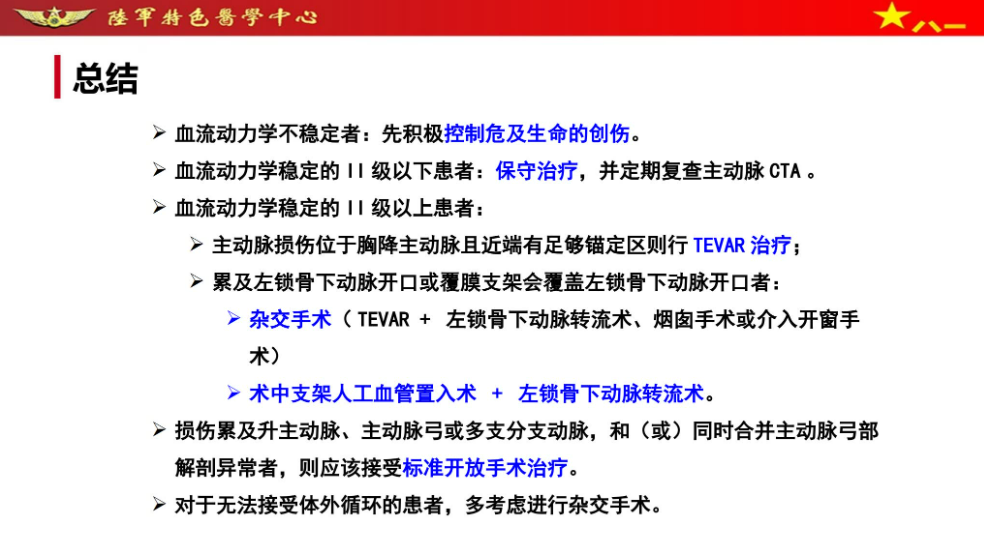
5. Contact Us
If you have any questions or interests regarding this technique or the Tianfu Vascular Conference, please leave a comment or contact us via email at endovascluar@simtomax.cn. Thank you for your attention. Let’s work together for health!


